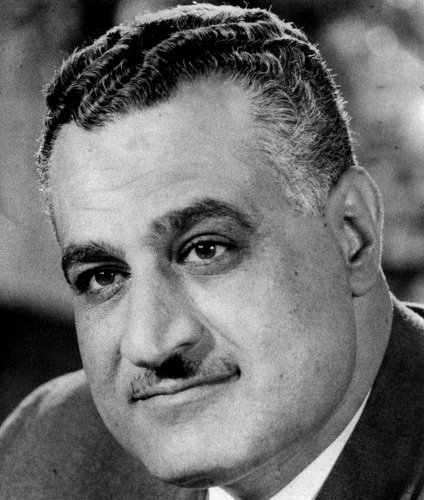Gamal Abdel Nasser was the second president of Egypt. He served from 1956 until his death in 1970. Gamal Abdel Nasser replaced the monarchy with a new government. Through he is reputed as a controversial man; he remains one of the most influential figures in the history of the Arab World.
Gamal Abdel Nasser was born to Fahima and Abdel Nasser in Bakos, Alexandria. In 1926, Gamal lost his mother, which plunged him into serve depression. Gamal completed his secondary schooling from Ras el –Tin Secondary School. He was involved in political events. In the following years, he organized many anti-British street demonstrations where he strongly protested against the Anglo- Egyptian Treaty of 1936.
In 1938, Nasser graduated from the Royal Military Academy as a second lieutenant. His first battlefield was during the 1948 war in Palestine.
Gamal provided his services to the military as a teacher and an officer. Post war, Gamal became an instructor in the military, and at the same time formed a nationalist group of young militants who strongly supported revolution.
Later with the same group, he formed a free association for officers. His main aim was to overthrow the British, and the Egyptian royal family. He was soon elected as the chairman of the organization.
Around 1952, the number of members in the group rose to ninety. On June 18, 1953 Egyptian was declared a republic. Major General Muhammad Naguib served as the president while Ali Maher retained his position as the prime minister.
A revolutionary command council was formed in which Naguib served as the chairman. However, Maher did not agree with many of the reforms and policies proposed by Naguib, so he resigned from the post in the same year.
In 1953, Nasser deposed Naguib from the post and put him under house arrest. Nasser soon barely able to save himself from assassination attempts. He ordered house arrest for thousands of members of the Brotherhood and those loyal to Naguib. Nasser soon became the unquestionable leader of Egypt.
In 1956, Nasser formed a new constitution under which Egypt became a one-party political system. Soon, Islam was declared as the official religion of the country. Nasser gained the support of a majority Egyptians.
With Nasser as the president of the country Egypt’s economy saw growth. Nasser also got monetary support from the US and Britain. Nasser continuously vouched for Arab independence from the British; he developed cordial relations with the Soviet Union. The US and UK thus withdrew their financial aid.
The British prime minister scared of Nasser nationalizing and cutting off oil supplies, formed a secret society with France and Israel, and planned an attack on Egypt. On October 29, 1956, the Israel Army invaded Egypt and two days later, British and French armies bombed Egyptian airfields. However, by March 1957, all the forces retreated and the prisoners of war were released.
Nasser reaffirmed his position as the president of the country. Later that year, Nasser ensured increased agriculture production and a greater investment in industrialization. In fact, it was under his rule that Egypt’s middle class took important political decisions and economic positions. Women were also offered more freedom.
In 1962, Nasser adopted socialism. He introduced the National Charter and a new constitution, which also highlighted universal health care, vocational schooling, affordable housing, women’s rights, and family planning.
Nasser was re-elected to the post of the president. However, in 1967, during the Arab-Israel War, also known as the six day War, Egypt faced a lot of destruction. Following this, Nasser tried to resign from his post, but was forced to continue. In 1970, the US sponsored the Roger’s Plan and the Israelis retreated.
Nasser married Tahia Kazem in 1944; they had five children. Nasser died on September 28, 1970, due to major heart attack. He was buried at Nasir Mosque, which was later renamed the Abdel Nasser Mosque.

